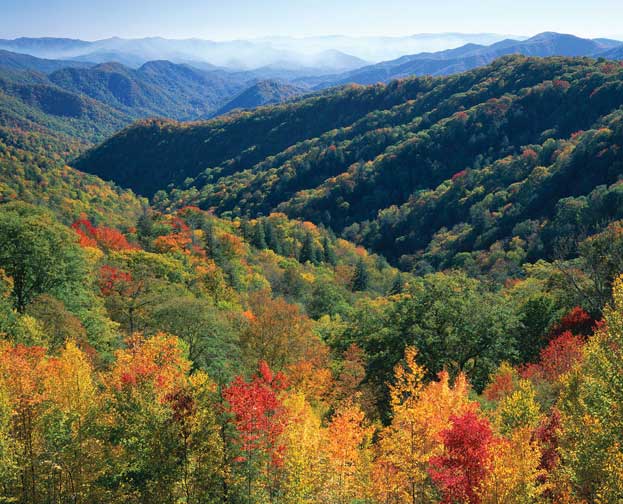The World Heritage Great Smoky Mountains National Park is the most important natural area in the eastern United States and is of world importance as an example of temperate deciduous hardwood forest and thus an outstanding example of the diverse Arcto-Tertiary geoflora era, having a high number of temperate species with some rich mixed stands. During Pleistocene glaciation it was the major North American refuge for temperate and boreal species of flora and fauna, so has a large number of endemic species as well as an extremely rich species composition. With 130 species of tree, it has almost as many species as all of Europe. This has resulted in a rich vegetation mosaic. It harbours many endangered species of animals, and has possibly the greatest diversity of salamanders in the world; it is a centre of endemism for North American molluscs.

Continent: North America
Country: United States of America
Category: Cultural
Criterion: (VII)(VIII) (IX) (X)
Date of Inscription: 1983
Great Smoky Mountains Features
The dominant topographic feature of the park is the range of the Great Smoky Mountains with 16 peaks over 1,829m. Lesser ridges form radiating spurs from the central ridgeline. In broad aspect, the topography of the park consists of moderately sharp-crested, steep-sided ridges separated by deep V-shaped valleys. Many of the mountain ridges branch and subdivide creating a complex of drainage systems with many fast-flowing clear mountain streams. The park contains 22 major watersheds and the water table is near the surface in almost all sections. Precambrian metamorphic rocks consisting of gneisses and schists, and sedimentary rocks.The vegetation changes continuously with elevation, slope aspect and soil moisture patterns. Five species are officially listed as endangered on the Fish and Wildlife Service List of Candidate Endangered Plants. A diverse fauna occurs including at least 50 native animals, reflecting the richness of the flora. Several species of bat and over 200 species of bird inhabit the park.










No comments:
Post a Comment